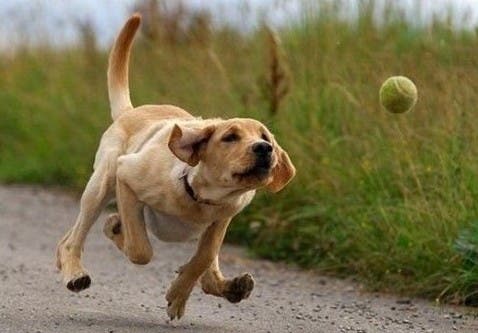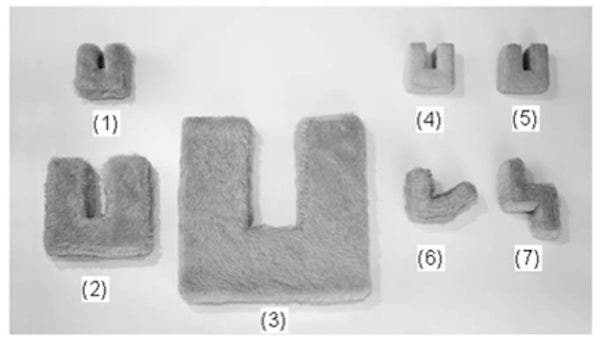
which your pet seems to actually understand what you’re telling him – no matter how silly the actual act of speaking to a dog might seem to you. Whether its catching a ball or climbing up ramps or chairs to get to your bed, dogs learn to understand commands.. The fact that dogs can identify and retrieve objects simply by shouting the object’s name is impressive by itself, but how do dogs cognitively go about learning “language”? A new research sheds new light on the matter and finds that dogs learn to associate objects with words significantly different that humans do, rather relying on the size and texture of an object to associate it with a word, than on shape, like humans do.
The first evidence that humans are, what’s commonly referred to as in psychological terms, “shape-biased” came in 1988 when an experiment showed this in children, after being thought to associate an U-shaped toy with the simply to remember word “DAX”. When the children were presented with a variety of toys in different sets – some of them were shaped like a DAX but of different sizes and textures’ some were of the same size and texture as the original DAX, but different in shape – it was found that the features of objects young children pay attention to when learning their names was governed by shape, and much less size or texture.
Humans aren’t the only beings that can identify objects based on words, other animals do it too. Maybe the most familiar example are dogs, which is why Emile van der Zee and colleagues from the University of Lincoln in the United Kingdom decided to study them. The researchers invited Gable, a border collie, and his owner to join their experiment. Gable was boosted by his owner as being able to recognize the labels for fifty-four different objects, and indeed when put to the test by the scientists the dog managed to retrieve forty-three out of fifty-four objects – that’s an impressive 80% accuracy.
How do dogs learn words

With a worthy study participant among their ranks, the scientists proceeded with their actual experiments in order to determine how dogs associate words. Similarly to the 1988 children experiment, new objects and new object names were introduced by holding the object in view and sounding out the object name several times, including the “DAX” itself. After the five-year old collie became sufficiently familiarized, he was presented with ten pairs from within the set of seven objects, and simply asked to retrieve the “DAX.” Gable generalized “dax” to objects of similar size in each of the ten trials he was given. The same was seen after the researchers used larger objects, for a new toy the L-shaped “GNARK”, in order to rule out the possibility that Gable preferred a certain size to chew up and retrieve.
After the initial experiments were over, the toys were given to Gable and his owner. The dog played with the toys for five weeks, time in which he became more familiar with them. The experiments were repeated, and this time Gable showed a texture bias. The scientists reason long-term word-object learning processes might lead to qualitatively different sorts of mental processes for object processing than shorter-term learning processes. Of course, these experiments were performed only on one dog, so it has to be repeated on more subjects in order for a pattern to become firmly established.
“A number of recent studies have suggested that the domestic dog’s word comprehension is human-like. Arguments have been made to refute this claim but until now there has been no clear empirical evidence to resolve the debate,” says Dr Emilie van der Zee, a psychologist and co-author of the paper published in the journal PLOS ONE.
“Our findings bring a fundamental new insight into this discussion and add to our understanding of the cognitive equipment necessary for true human word learning.”






